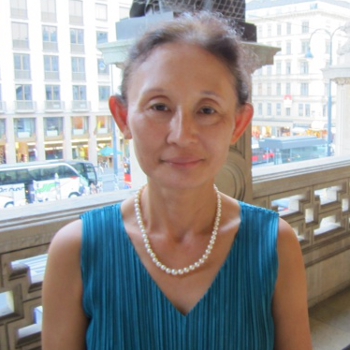Richard Jones’ production of Lohengrin was controversial when it first opened in Munich but has since settled in as part of the repertoire. The current revival was to feature an ideal cast of singers for the six major roles, but unfortunately Klaus Florian Vogt had to cancel performances due to illness. Robert Dean Smith stepped into the title role and, while he did his best under the circumstances, the evening fell short of the transcendental experience it could have been, with Wagner’s most romantic score magnificently realized by the Bavarian State Orchestra led by Lothar Koenigs.
Before each act, the audience encountered an open stage with various goings on. Elsa stood alone with her back towards the audience as she sketched a house plan during the prelude. Before Act II, Lohengrin and Elsa worked together on the half-completed house with help from others. The last act saw the house complete with neighbours putting on the finishing touches. Does the house represent domestic bliss that Elsa hoped to share with Lohengrin, or does it symbolize something else, national unity against hostility, or perhaps comformity? The folks of Brabant, clad in various uniforms in Act I, certainly seemed happier in Act II as they worked on the house in the same light blue shirt worn by Lohengrin when he first appeared bearing a swan. After Lohengrin burned a nuptial bed and a crib upon Elsa’s betrayal, they committed a mass suicide rather than facing the old regime represented by Elsa and her brother.
The production had some striking theatrical effects. Mimi Jordan Sherin effectively lit the house with utopian brightness. Video by Silke Holzach broadcast the herald’s pronouncements and wedding vows via large spectacles used as a screen. Trumpets played from a side box as well as the back of the house to create enveloping sonority. The chorus executed choreographed movements while singing in perfect unison with the orchestra.
Two female soloists gave the best vocal performances of the evening. Edith Haller's Elsa had a youthful gleaming voice that opened up brightly without strain as her music rose higher and grew louder. Her voice never lost its warm clarity; her musicality was astonishing as she was always in complete synch with the orchestral melodies. Her acting might have benefited from more spontaneity and passion, as when she sang her happiness in “Euch luften” and in her Act III duet with Lohengrin, but her consistently delightful and technically solid singing was enough of a reward.
Petra Lang’s experience as Ortrud was clear as she gave the most complete portrayal of the character as pure evil. Vocally, she was tireless in her duet with her weak-willed husband as well as in her manipulative interaction with Elsa in Act II. While Lang was thrilling in her declamatory singing, she also gave plenty of nuance and colour in her vocal characterization of a woman who was ultimately defeated by her own ambition.
Lohengrin is a hero from outside of time and space, and his first and final greetings to his beloved swan should convey his non-human quality in their high flying passages. While Robert Dean Smith possesses a lyrical voice well suited for the role, he lacked the vocal charisma and dynamism of the other-worldly hero. He showed considerable professionalism in singing in an unfamiliar production at short notice and acted well. His compact voice unfortunately lacked heft to ride above Wagner's heavy orchestration. While his final utterance “Seht da den Herzog von Brabant! Zum Führer sei er euch ernannt!” rang out strongly, he grew tired towards the end of the challenging Grail narrative “In fernem Land”. Nevertheless, one should be thankful to Mr Smith, who gave a respectable performance as a last minute substitute.
Thomas J. Mayer was solid but variable as Telramund. While he was in good voice and acted well, he was not always technically as steady as he could have been. Gunther Groissböck, on the other hand, was a commanding King with clear diction and flexible voice that negotiated both the high and low limits of the role. Martin Gantner impressed as a strong-voiced no nonsense Herald, marking crucial moments of the opera with distinction.
Koenigs’ interpretation was straightforward, and he gave plenty of breathing room to both the orchestra and singers. He skillfully brought out shimmering qualities of the strings in the prelude, and winds and brass players responded superbly to his deliberate tempo throughout. He did bring the opera to a thrilling conclusion by finally rushing the orchestra and chorus to the stirring if ambiguous ending of the opera.




